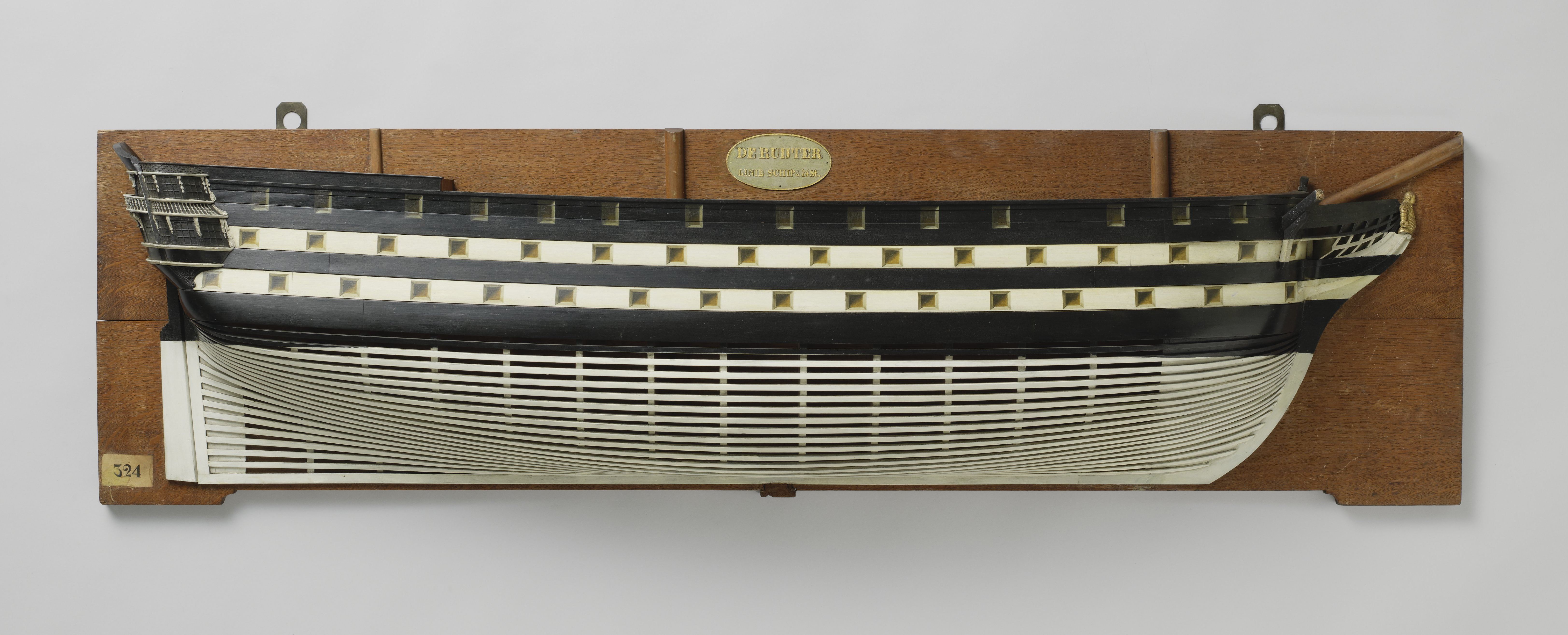Model as ship of the line Rijksmuseum Amsterdam Netherlands. Original url
In the Dokhaven of the navy yard of Vlissingen. Netherlands around 1865
An item reported that according to the Dutch minister of navy the as a steam frigate rebuilt Zr. Ms. De Ruyter still was not completed and that another ƒ 200.000 were needed. His intention was to convert her into an armoured floating battery with sufficient steam power. For this conversion was a budget of ƒ 414.880 needed.(1)
Note
1. Call sign GQSV. On stocks at the naval yard at Flushing, Netherlands 20 August 1831 as 74 guns ship of the line 2nd class. Dimensions 54,16 x 14,30/14,70 x 6,46-7,32m, displacement 3000-3655 ton (maximum), sail area 237 M2. Crew numbered 650 men. As 54-gun frigate 1st class on stocks at the naval yard at Flushing 22 February 1850, launched 8 August 1853, commissioned 21 August 1854. Dimensions 54,16 x 14,30/14,70 x 6,10-6,80m, displacement 2770 ton, sail area 2170 square metres. Crew numbered 500 men. Rebuilt at naval yard at Hellevoetsluis and NSBM Fijenoord as a steam frigate. In dry dock at the naval yard at Hellevoetsluis 20-21 October 1859 and in the aft dock 25 October-1860-19 September 1861. In 1860 fitted out there with steam power and fitted out with 45 guns. Launched 19 September 1861, commissioned 17 April 1862 but further conversion stopped. Dimensions 60,30/63,50 x 14,30/14,70 x 6,10-6,80m, displacement 2828 ton, sail area 2.450 square metres. Crew numbered 500 men. Rebuilt as an floating battery at the naval yard at Vlissingen. On stocks mid 1862, completed mid 1865, commissioned 21 July 1870, de commissioned on 9 October 1870 and finally sold at Willemsoord to be broken up 1874. Dimensions 60,30/63,00 x 14,30/14,93 x 6,40-6,80m, displacement 2944-3050 ton (maximum). Crew numbered 250 men. Armed with 14-60pdrs and served at the mouth of the Schelde. Her figurehead was made of fir-wood representing a bust of the Dutch sea hero M.A. de Ruyter. When she was rebuilt as a steam battery, a same project was going on in Denmark namely with the Dannebrog. The Danes visited the Netherlands to see De Ruyter.


